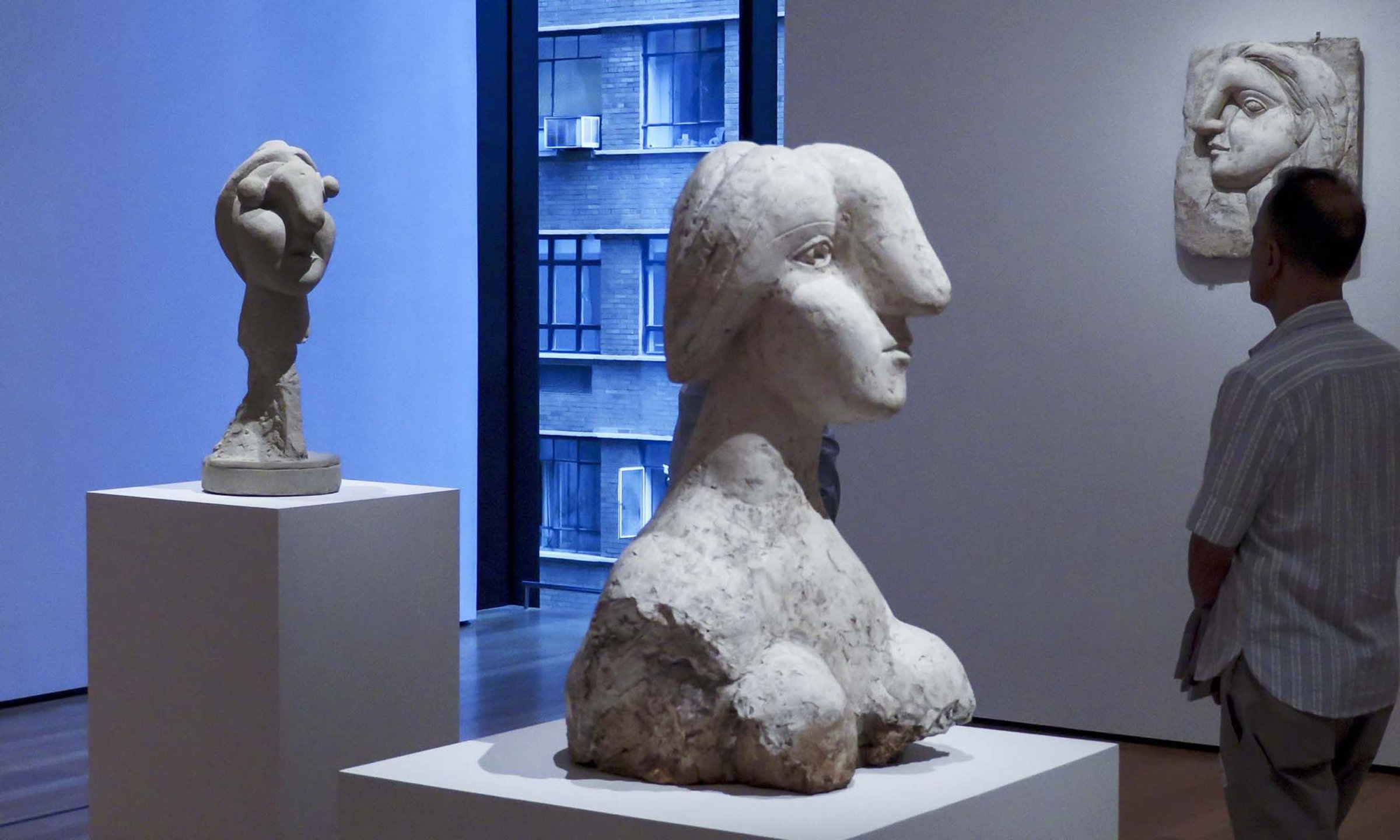
Picasso the painter we all know. Picasso the sculptor? Not so much. But that all changes with “Picasso Sculpture,” a once-in-a-lifetime show now at the Museum of Modern Art in New York City through Feb. 7. With more than 140 works from all phases of his career–the curators are Ann Temkin and Anne Umland of MOMA, with Virginie Perdrisot of the Musée National Picasso in Paris–it magnificently enlarges our view of the great man. It’s literally Picasso in 3-D.
Though there was never a time he wasn’t painting and drawing, for Picasso sculpture was an on-and-off affair. He approached it in intense episodes, any of which might go on for years and each of which was usually devoted to some new practice or material. He worked his way into and out of carved wood, molded clay, welded assemblage, steel-rod constructions, plaster heads, painted ceramics and sheet metal–not rewriting the rules of each medium so much as discarding the very idea that rules were required.
Picasso was perfectly suited to ignore the conventions of sculpture because he never learned them. Schooled from the first as a painter, he never mastered the business end of a chisel or trained to work in clay. So he had no reservations about nontraditional tools like the welding torch or unconventional materials like tin cans, sand and even trash. For a time in the 1950s he would take walks with his then companion Françoise Gilot, who pushed an empty baby carriage that he would fill with whatever caught his eye at the local junkyard.
And because he wasn’t committed to the long traditions of sculpture it was easy for him to take his most radical step–to reconceive sculpture not just as a solid form but also as a framework that traps space, to make voids as palpable as the solids around them. Cubism, the uproar on canvas he started with Georges Braque around 1907, was already a way of exploding form and space in two dimensions. Why not demolish the third?
Thinking that way led him to one of his first and most fundamental breakthroughs, a guitar he produced in paperboard in 1912, then in metal two years later. It was a very new machine, an open assembly of interlocking planes and voids that incorporated emptiness. As a kind of visual paradox the sound hole was actually a solid protrusion–a cylinder that thrust its circular opening toward you. He would make several subsequent versions, including one in 1924 that wasn’t built out of multiple components but sliced and bent from a single sheet of metal–a thing unfolding itself in space. For good measure every version of his guitar also validated the novel idea that an ordinary object, not a person or animal, was a subject fit for sculpture. In 1934 Picasso would take that notion to the limit with Crumpled Paper–a wad of just that, immortalized in plaster. In recent years a number of artists have produced trash bags in solid form. He did it 81 years ago.
Paradox was often central to Picasso’s sculpture. He used forms and materials in ways that contradicted their qualities as we ordinarily understand them–making a solid “hole” or plaster “paper.” In 1914 he crafted a series of six bronzes called Glass of Absinthe, all identical in form but each painted differently–a transparent glass made from opaque metal. Picasso gave it a certain transparency all the same by cutting two wedge-shaped openings in its side.
Borrowing an idea from the Cubist collage paintings he and Braque were both making that year–pictures with bits of newsprint or wallpaper glued to the canvas–he also incorporated a real absinthe spoon into each one, turning the “real” spoon into “art” and drawing the art into the real world. That kind of assemblage was a crucial tactic, pressing humble objects into service as high art. In his 1933 Head of a Warrior, the eyes are repurposed tennis balls.
In the last decades of his life–he was 91 when he died in 1973–Picasso was arguably more interesting as a sculptor than as a painter. In his late canvases there are too many strenuous reimaginings of Velázquez, Poussin, Delacroix–encounters with Old Masters in which the old man didn’t always come out on top. But his sculpture remained vital and original. He devoted years to ceramics, making hundreds of witty painted plates and figures like Vase: Woman. He also discovered how to scale his work into monumental public displays, like his mysterious steel head in Chicago’s Daley Plaza, a conflation of his wife Jacqueline with their Afghan hound that manages to be both overwhelming and ingratiating.
It’s useful to remember that not all the breakthroughs in 20th century sculpture emerged from Picasso’s fevered brain. He was always aware of and responding to the currents around him: Abstraction, Surrealism and above all the work of his lifelong frenemy Matisse. But he opened the way to so many varied approaches that there are stretches of this show that seem to be the work of three or four different artists. The cumulative effect is so powerful that you have to remind yourself this isn’t a group show, a conversation among contemporaries. It’s all just Picasso, talking to himself.
More Must-Reads from TIME
- Donald Trump Is TIME's 2024 Person of the Year
- Why We Chose Trump as Person of the Year
- Is Intermittent Fasting Good or Bad for You?
- The 100 Must-Read Books of 2024
- The 20 Best Christmas TV Episodes
- Column: If Optimism Feels Ridiculous Now, Try Hope
- The Future of Climate Action Is Trade Policy
- Merle Bombardieri Is Helping People Make the Baby Decision
Contact us at letters@time.com